| Date | Text | |
|---|---|---|
30 Nov 1891

William Ramsay |
William Ramsay (chemistry) William Ramsay discovers argon. |
|
30 Nov 1891

Ellen Swallow Richards |
Ellen Swallow Richards (environment) American environmental chemist Ellen Swallow Richards, in a lecture in Boston, calls for the "christening of a new science" – oekology, to embrace environmental education and consumer nutrition. |
|
30 Nov 1891

Boulton and Watt |
Boulton and Watt (history of science) Boulton and Watt's 1779 Smethwick Engine is moved to the Birmingham Canal Navigations Ocker Hill depot in England for preservation. |
|
30 Nov 1891
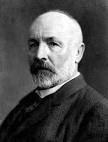
Georg Cantor |
Georg Cantor (mathematics) Georg Cantor shows there are different kinds of infinity and studies transfinite numbers. |
|
30 Nov 1891

Gino Fano |
Gino Fano (mathematics) Gino Fano discovers the Fano plane. |
|
30 Nov 1891
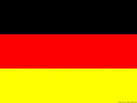
German |
German (medicine) German pathologist Curt Schimmelbusch proposes that medical dressings should be sterilized daily prior to surgery and designs a form of autoclave to facilitate this. |
|
30 Nov 1891

Czech |
Czech (medicine) Czech neurologist Arnold Pick identifies the clinical syndrome of Pick's disease and the Pick bodies that characterise the frontotemporal lobe disorder. |
|
30 Nov 1891

Sjögren’s syndrome |
Sjögren’s syndrome (medicine) Johann von Mikulicz-Radecki first describes Sjögren’s syndrome. |
|
30 Nov 1891

William Osler |
William Osler (medicine) First edition of William Osler's textbook The Principles and Practice of Medicine, designed for the use of practitioners and students of medicine is published in Edinburgh while the author is Professor of Medicine at Johns Hopkins University. It remains internationally significant in medical education for forty years. |
|
30 Nov 1891
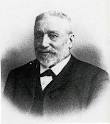
François Hennebique |
François Hennebique (technology) François Hennebique patents his system of reinforced concrete. |
|
30 Nov 1891
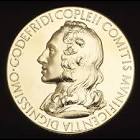
Copley Medal |
Copley Medal (awards) Copley Medal: Rudolf Virchow |
|
30 Nov 1891
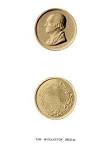
Wollaston Medal for geology |
Wollaston Medal for geology (awards) Wollaston Medal for geology: Ferdinand von Richthofen |
|
02 Jan 1892

George Biddell Airy |
death George Biddell Airy George Biddell Airy (born 1801), astronomer. |
|
21 Jan 1892
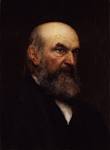
John Couch Adams |
death John Couch Adams John Couch Adams (born 1819), mathematician. |
|
02 Feb 1892

Crown cork |
Crown cork In 1892, the bottle cap with cork seal was patented by William Painter, Baltimore (U.S. No. 468,226). This replaced the time-consuming cork and wire bale way of sealing bottles, and represented a major saving for the bottlers. The cap was used until the 1970s, when cork in soft drink and beer bottle caps was considered unhealthy, so, manufacturers switched to cans and plastic, instead. Currently, caps used on bottles use plastic cap "liners", instead of cork. |
|
23 Feb 1892

Black American patent |
Black American patent In 1892, black American, Henry A. Bowman of Worcester, Mass., was issued a U.S. patent for a "Method for Making Flags" (No. 469,395). Bowman devised an easy method to apply emblems or stars upon the field fabric of flags whereby those affixed on opposite sites of the field would correspond in position. He used a cut star or emblem which was stitched through the fabric and an unformed blank on the reverse, using a zigzag stitch over-seaming the raw-cut edges. The blank on the reverse could then be cut away to the outline of the seaming stitches. |
|
23 Feb 1892

Hugh Burgess |
death Hugh Burgess Died 23 Feb 1892 (born c. 1825). British-born American co-inventor (1852, with Charles Watt) of the "soda" process to produce paper from wood pulp, digesting wood shavings by cooking them in a caustic soda (sodium hydroxide) solution. In 1719, Frenchman Rene de Reaumur suggested using wood to make paper, similar to the paper-like material created by North American wasps to build their nests. By 1850, when a German, Friedrich Keller, devised a grinding method to make paper from wood, the product had poorer quality than rag pulp. Burgess and Watt devised a way to separate the cellulose from the intercellular lignin matter (to render the cellulose fit for being made into paper) and to produce fibres of proper length for immediate felting into paper. |
|
23 Feb 1892

Rudolf Diesel |
Rudolf Diesel (technology) Rudolf Diesel obtains a patent for a compression-ignition engine. |
|
27 Feb 1892
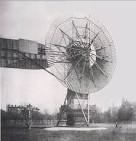
Early electricity from wind |
Early electricity from wind In 1892, “Electricity From Wind” was reported in the Cincinnati Enquirer, from the Philadelphia Record. Is said that “Owing to the comparative scarcity of water-power in many parts of England” to generate electricty, “attention has been given to wind power, of which the country is well supplied. A small experimental plant has been in operation at a flour-mill near London, the wind-mill supplying sufficient power to charge a storage battery, from which a number of arc and incandescent lamps were lighted nightly. Although the current obtained was small,” the experiment demonstrated the possibilities. The article suggested the use of wind-powered electricity generators at country houses on elevated ground. The article represents one example, not necessarily the first. Edison's incandescent lamp dates from 1879. Steam-powered central generating began in New York City in 1882. |
|
29 Mar 1892
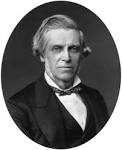
Sir William Bowman, 1st Baronet |
death Sir William Bowman, 1st Baronet Sir William Bowman, 1st Baronet (born 1816), ophthalmologist, histologist and anatomist. |
|
30 Mar 1892
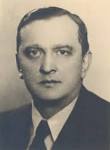
Stefan Banach |
birth Stefan Banach Born 30 Mar 1892; died 31 Aug 1945 at age 53. Polish mathematician who founded modern functional analysis and helped develop the theory of topological vector spaces. In addition, he contributed to measure theory, integration, the theory of sets, and orthogonal series. In his dissertation, written in 1920, he defined axiomatically what today is called a Banach space. The idea was introduced by others at about the same time (for example Wiener introduced the notion but did not develop the theory). The name 'Banach space' was coined by Fréchet. Banach algebras were also named after him. The importance of Banach's contribution is that he developed a systematic theory of functional analysis, where before there had only been isolated results which were later seen to fit into the new theory. |
|
02 Apr 1892
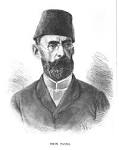
Emin Pasha |
death Emin Pasha Emin Pasha (born 1840), explorer. |
|
12 Apr 1892

Portable typewriter |
Portable typewriter In 1892, the first U.S. patent for a portable typewriter, the Blickensderfer, was issued to George Blickensderfer of Stamford, Connecticut (No. 472,692). |
|
13 Apr 1892
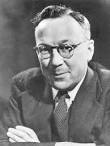
Sir Robert Alexander Watson-Watt |
birth Sir Robert Alexander Watson-Watt Born 13 Apr 1892; died 5 Dec 1973 at age 81. Scottish physicist who is credited with the development of radar location of aircraft, in England. He studied at St Andrews University, taught at Dundee University, and in 1917 worked in the Meteorological Office, designing devices to locate thunderstorms, and investigating the ionosphere (a term he invented in 1926). He became head of the radio section of the National Physical Laboratory (1935), where he began work on locating aircraft. His work led to the development of radar (RAdio Detection And Ranging) which played a vital role in the defence of Britain against German air raids in 1940. He was knighted in 1942. |
|
14 Apr 1892

Karl Wilhelm Reinmuth |
birth Karl Wilhelm Reinmuth Karl Wilhelm Reinmuth (died 1979), German astronomer. |
|
25 Apr 1892
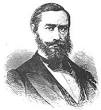
Henri Duveyrier |
death Henri Duveyrier Died 25 Apr 1892 at age 52 (born 28 Feb 1840). French explorer who contributed to African ethnology with his study of the Tuareg people of the Sahara. He travelled through the region south of the Atlas Mountains, between Morocco and Tunisia. There he spent months living with the Tuareg, a pastoral people, observing their customs, speech, and their interest in poetry. |
|
03 May 1892

Sir George Paget Thomson |
birth Sir George Paget Thomson Born 3 May 1892; died 10 Sep 1975 at age 83. English physicist who shared (with Clinton J. Davisson of the U.S.) the Nobel Prize for Physics in 1937 for demonstrating that electrons undergo diffraction, a behaviour peculiar to waves that is widely exploited in determining the atomic structure of solids and liquids. He was the son of Sir J.J. Thomson who discovered the electron as a particle. |
|
05 May 1892

August Wilhelm von Hofmann |
death August Wilhelm von Hofmann August Wilhelm von Hofmann (born 1818), chemist |
|
28 May 1892

Scottish American |
Scottish American (environment) Scottish American naturalist John Muir founds the environmental organization the Sierra Club in San Francisco, aided by a group of professors from the University of California, Berkeley, and Stanford University. |
|
22 Jun 1892

N. Howell Furman |
birth N. Howell Furman Born 22 Jun 1892; died 2 Aug 1965 at age 73. American analytical chemist whose analytical separation of uranium contributed to the development of the atomic bomb. He developed special techniques for preparing the bomb project materials, notably the sampling and analysis necessary for producing pure uranium metal. He also devised a new method of estimating traces of metals in various substances and assisted in developing an ether extraction process for the preparation of uranium oxide of the extreme purity required. His special methods also made possible greater utilization of tracer techniques with radioactive and stable isotopes. |
|
27 Jun 1892

Carl Schorlemmer |
death Carl Schorlemmer Carl Schorlemmer (born 1834), organic chemist. |
|
04 Jul 1892

James Dewar |
James Dewar (chemistry) James Dewar invents the Dewar flask. |
|
18 Jul 1892

Waldemar Haffkine |
Waldemar Haffkine (medicine) Russian-born bacteriologist Waldemar Haffkine demonstrates the first anti-cholera vaccine. |
|
24 Jul 1892

Alice Ball |
birth Alice Ball Alice Ball (died 1916), African American chemist. |
|
15 Aug 1892

Prince Louis-Victor de Broglie |
birth Prince Louis-Victor de Broglie Born 15 Aug 1892; died 19 Mar 1987 at age 94. Louis Victor Pierre Raymond duc de Broglie was a French physicist best known for his research on quantum theory and for his discovery of the wave nature of electrons. De Broglie was of the French aristocracy - hence the title “duc” (Prince). In 1923, as part of his Ph.D. thesis, he argued that since light could be seen to behave under some conditions as particles (photoelectric effect) and other times as waves (diffraction), we should consider that matter has the same ambiguity of possessing both particle and wave properties. For this, he was awarded the 1929 Nobel Prize for Physics. |
|
15 Aug 1892

Louis-Victor de Broglie |
birth Louis-Victor de Broglie Louis-Victor de Broglie (died 1987), French winner of the Nobel Prize in Physics (1929). |
|
20 Sep 1892

Wire glass patent |
Wire glass patent In 1892, wire glass was patented by Frank Schulman. Wire glass, as the name suggests, is simply a wire mesh inserted during the plate glass manufacturing process to create a single monolithic glass with properties useful where fire safety requirements apply. |
|
11 Oct 1892
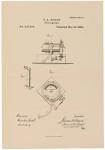
Edison patent |
Edison patent In 1892, Thomas A. Edison was issued a patent for an "Electrical Depositing-Meter" (U.S. No. 484,183). |
|
26 Oct 1892

André Chapelon |
birth André Chapelon André Chapelon (died 1978), French steam locomotive designer. |
|
05 Nov 1892

J. B. S. Haldane |
birth J. B. S. Haldane J. B. S. Haldane (died 1964), British geneticist. |
|
20 Nov 1892

James Bertram Collip |
birth James Bertram Collip Born 20 Nov 1892; died 19 Jun 1965 at age 72. Canadian biochemist co-discovered insulin. He worked with Frederick Banting and Charles Best to refine a method of removing and purifying insulin. Working with the bovine pancreas, Collip produced insulin in a form which permitted clinical use. Together with his other contributions in endocrinology, including his isolation of the parathyroid hormone and establishing a bioassay for measuring serum calcium. He stands as a major figure in Canadian medical history. |
|
05 Dec 1892

Carl Richard Moore |
birth Carl Richard Moore Born 5 Dec 1892; died 16 Oct 1955 at age 62. American zoologist noted for his research on animal reproductive organs and internal secretions. Moore systematically studied the gonads and associated ducts and glands of vertebrates. Collaborating with T.F. Gallagher and F.C. Koch at the University of Chicago, he became the first to isolate testicular secretion containing the male sex hormones androsterone and testosterone; the former primarily influences the growth and development of the male reproductive system, whereas the latter is responsible for inducing and maintaining secondary male sex characteristics. This discovery (c. 1929) paved the way for research into the chemical makeup of such androgens and their production. |
|
06 Dec 1892
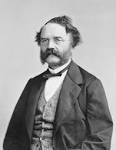
Werner von Siemens |
death Werner von Siemens Werner von Siemens (born 1816), electrical engineer. |
|
12 Dec 1892

Herman Potočnik Noordung |
birth Herman Potočnik Noordung Herman Potočnik Noordung (died 1929), Slovene pioneer of astronautics and cosmonautics. |
|
18 Dec 1892
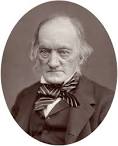
Richard Owen |
death Richard Owen Richard Owen (born 1804), anatomist and paleontologist. |